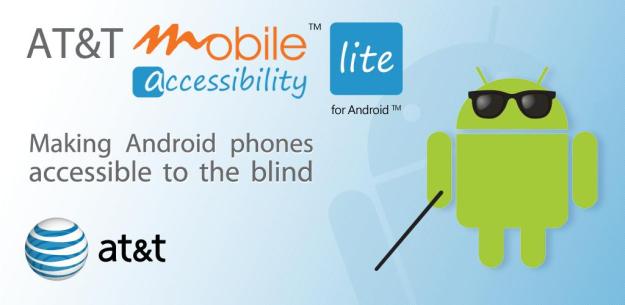
One major problem with smartphones—and tablets, and computers for that matter—is that people who are blind or visually impaired have a great deal of trouble using even their most basic functionality. Close your eyes and imagine trying to navigate Windows 7 or Apple’s iOS—and, once you give up in frustration, imagine trying to do it without ever having seen the OS’s display. Adaptive technology has a long way to go before these devices are as useful to the visually impaired as they are to the sighted, but AT&T took an interesting step in the right direction today, announcing that AT&T Mobile Accessibility Lite for Android smartphones is now available for free in the Android Market—for a limited time.
“AT&T has long been committed to offering wireless products and services that are usable and beneficial to as many people as possible,” said AT&T Mobility and Consumer Markets VP Carlton Hill, in a statement. “As the first wireless carrier worldwide to offer Mobile Accessibility Lite, we are thrilled to make Android accessible to all of our customers.”
Developed by Code Factory, Mobile Accessibility Lite uses Nuance Vocalizer text-to-speech technology to make 11 key Android apps usable by the blind or visually impaired, including an Android device’s basic phone functionality, SMS messaging, alarms, calendar, email, Web, Where Am I, Music Player, and phone settings. The app speaks app icons as users hover over them, and enables users to first select any app then open it with a double-tap to the screen—users don’t need to know where the app’s icon is. The app also enables speech-assisted text input for email and messages, and the app also offers speech recognition, so users can speak voice or text messages.
To be sure, the product is not without its flaws—it has a tendency to read times as “five colon thirty one colon zero five seconds,” for instance, and sighted users would no doubt be quickly frustrated at the slow pace of using a phone via Mobile Accessibility Lite. That’s the nature of the beast: applying adaptive technology to a visually-oriented operating system like Android is no substitute for a mobile operating system that’s actually designed for the visually impaired. Nonetheless, Mobile Accessibility Lite is a step in the right direction, and it is notable that AT&T is offering the app for free, even if only for a limited time: Code Factory’s other accessibility offerings go for $99 in the Android market.
AT&T’s Mobile Accessibility Live supports Android 2.1 and above.


